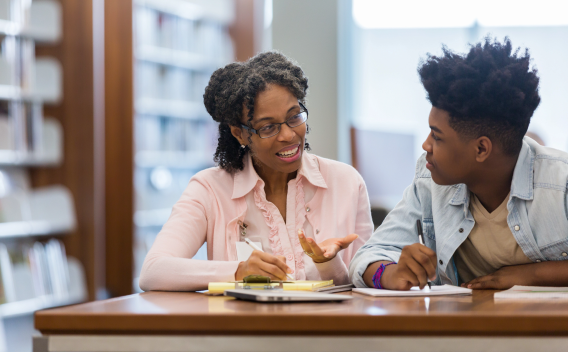By
Published
April 30, 2020
Tags
It is staggering how much the world has changed in just a few weeks. The COVID-19 pandemic has altered every part of our lives, every institution — and few more profoundly than our schools.
For the most part, people are handling these changes with amazing courage. It was striking to read the results of a recent poll, conducted for us by communications firm Be Clear, in partnership with Change Research. Parents reported having assembled a combination of sources of learning for their children — a couple of hours of material each day from their school, a couple of hours from other sources. A third were communicating at least daily with their child’s teacher. Meanwhile, we saw one example after another of educational heroism — teachers, principals and other school staffers using school buses to drop off bags of groceries and pick up homework packets, or calling internet providers on behalf of families who don’t speak English.
That’s the inspiring news. There’s harder news too.
In our poll, 40 percent of low-income parents reported that they had lost their job because of the COVID-19 downturn. And anxiety over the future was deep and widespread. The majority of parents reported worries about their children’s health, about when and how their kids would go back to school, and about learning they would miss.
I share all those concerns. I think about what happened in Argentina, where schools repeatedly closed in the 1980s and 90s — enough to cost the average student about half a year of school. In studies decades later, that time out of school not only hurt students on every measure of educational progress — it even hurt the children of the children who had missed all that school.
Yet I also worry that in the effort to get students back on track, we’ll make school a really hard place to come back to — unless we deliberately choose another path.
Here’s what I mean. The likelihood is that most kids who haven’t seen the inside of a school for six months will be well behind, with the deepest challenges facing the kids who already faced the greatest adversity before “COVID” became a household word. The natural response of policy elites will be to establish sweeping, top-down plans for remedial everything. Our schools — already filled with memories of the sickness that drove us out of them — will become a place where our children slog through making up for lost time.
It’s not only a depressing and demotivating vision; it’s one that assumes big swaths of kids will be in the same place academically by the end of this thing. That may not even be close to right. No one can know what kids will have read endlessly about, or have developed curiosity or expertise about, during their long time away from school. Some kids will have slipped in some subjects and soared in others, maybe thanks to a cousin or aunt who tutored them every day or a teacher with a particular gift.
The first task of our schools must not be to inform our kids that they’ve effectively failed the year and to retain them in their current grade — a proven negative in students’ learning. Instead, schools’ task must be to understand what children can now do as well as where they’re struggling, what new fascinations might power their learning — and where they need emotional as well as academic support.
As counterintuitive as it may feel right now, we need an approach far more optimistic than the default “remedial for all” approach. It’s one that demands not just a whole-child approach, but a genuinely individualized approach.
What we in the world of policy and philanthropy must do, urgently, is ensure teachers and other professionals have an excellent toolkit to enable them to understand where each of our children stands — the strengths and the challenges — so we can meet our kids where they are when they finally arrive back in school. Likewise, practitioners will need solutions to address the trauma so many students will have experienced over these months, just as much as their academic needs.
But the actual approaches and solutions can’t be driven by elite policy and philanthropy folks. Decisions must be guided by the people closest to the problem — families and practitioners, most of all. And the answers must work for the students in greatest need — especially those learning English and those with special needs.
In most places, the return to school is a long way off. And while the planning for that moment needs to happen now, we also want to make sure school leaders have the tools and the support they need to keep families and communities informed and on track as much as possible in this moment. To that end, we’ve launched several resources, including:
- A COVID-19 response kit for school communicators,
- Curated resources to support distance learning, and
- Resources to guide nonprofits in applying for government relief funding.
This is a strange moment, as we seek to do everything we can to heal the world, even as we can’t do some of the simplest things — like inviting people into our homes and embracing them. We’re lucky to support partners who are putting energetic and creative answers to work, with the spirit of urgency this moment deserves. I wish health, patience and strength to everyone.






